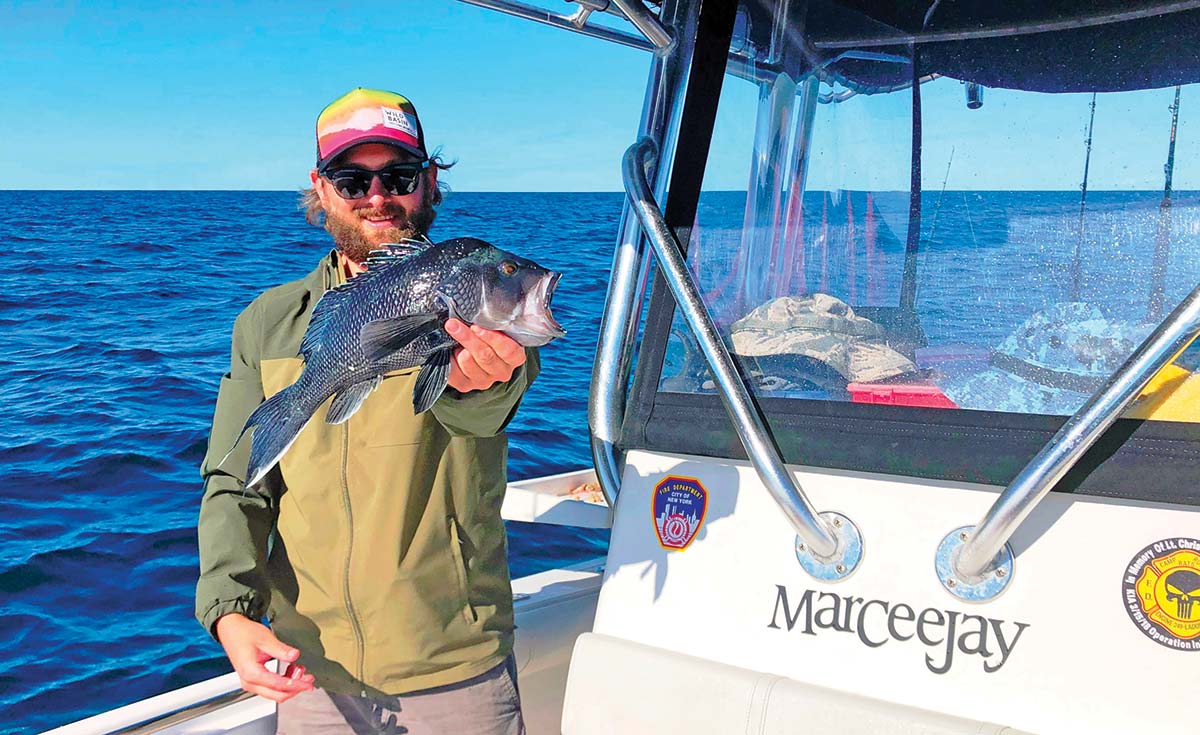
Setting your boat up for the task of working the near and offshore wrecks.
Successful wreck fishing requires a copious amount of dedicated hardware, some of which you might already have in the garage or basement, with other gear requiring a trip down to the local marine store or surfing online at your favorite internet retailer. Some of these specialized tools include different types of anchors, rode, wreck floats, anchor balls, electric trolling motors, heavy duty sinkers, bait-holder hooks, leader material, three-way swivels, etc.
There’s a lot to unpack here obviously. But remember that the prime directive of wreck fishing is that if you can’t find it, or see it, it’s hard to fish it. Thus, if there’s one item that plays an absolutely critical role in determining your wreck/reef/rock pile fishing success, it’s the marine electronics that you choose to get the job done.
Finder’s Keepers
Critical considerations for choosing the right E-gear include the size of your display screen (go big or go home) and the transducer selection and placement. Personally, I’ve had every conceivable combination of dedicated and/or multi-function displays on my boats, ranging from single/twin 7-inch screens, solo 9-inch and 10-inch screens and my 228 EdgeWater’s current setup that features a single Simrad GO-12 MFD, combined with a dedicated Furuno GP33 4.3-inch GPS unit used strictly for navigation to and from my favorite wrecks. This combination of relatively affordable and uber reliable equipment gives me everything I need to find, see and fish my wreck du jour.
If you have the dashboard space and budget, twin 12-inch, 15-inch or 19-inch displays will create the temporary illusion that you are navigating a US Navy Frigate, but it’s all part of the “find it, see it, fish it” success theme that we are hammering home. Large color displays let you observe more of what’s going on below, with plenty of space to explore the full capabilities of your machine, like enhanced zooms and other split-screen options.
Transducer selection and placement also plays a big part in mapping out the details of the wreck once you arrive on station. My Simrad’s multi-function, transom-mount Total Scan transducer offers a wealth of capability in a relatively compact footprint. This T/D allows me to choose either 83-kHz or 200-kHz broadband frequencies, plus medium (wider cone angle) or high (narrower cone angle) CHIRP, along with 455-kHZ and 800-kHZ StructureScan and Down Scan imaging. Mounting this correctly on the transom was the key to unlocking this transducer’s potential and I performed this myself to insure 100 percent success with the correct drop below the transom, along with the aft deflection angle.
Bottom line, the Total Scan unit gives me a crystal clear picture of the bottom structure on demand, whether I am traveling at cruising, trolling or idle speeds, which is a major plus for stumbling onto schools of fish at mid-depths or new bottom structure when underway out on the briny.
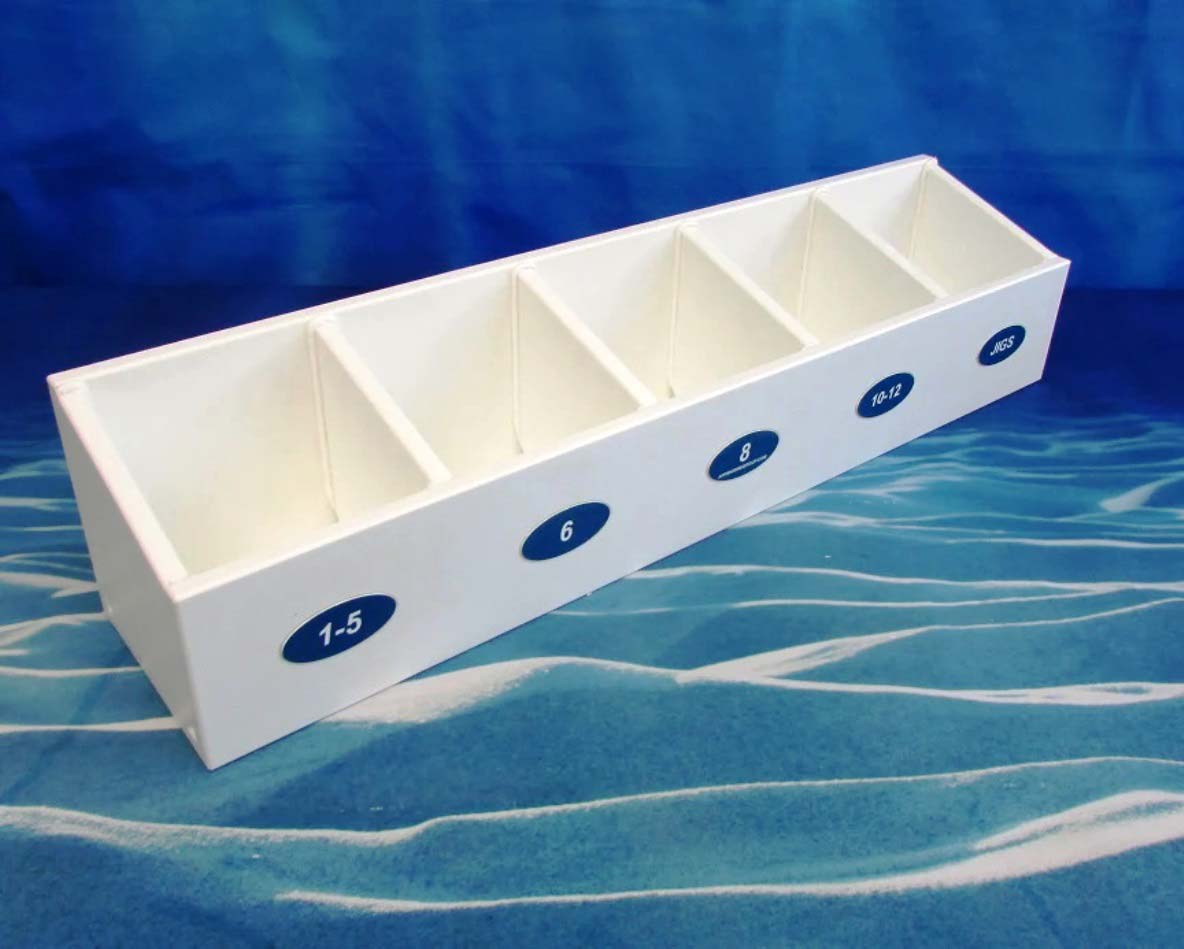 |
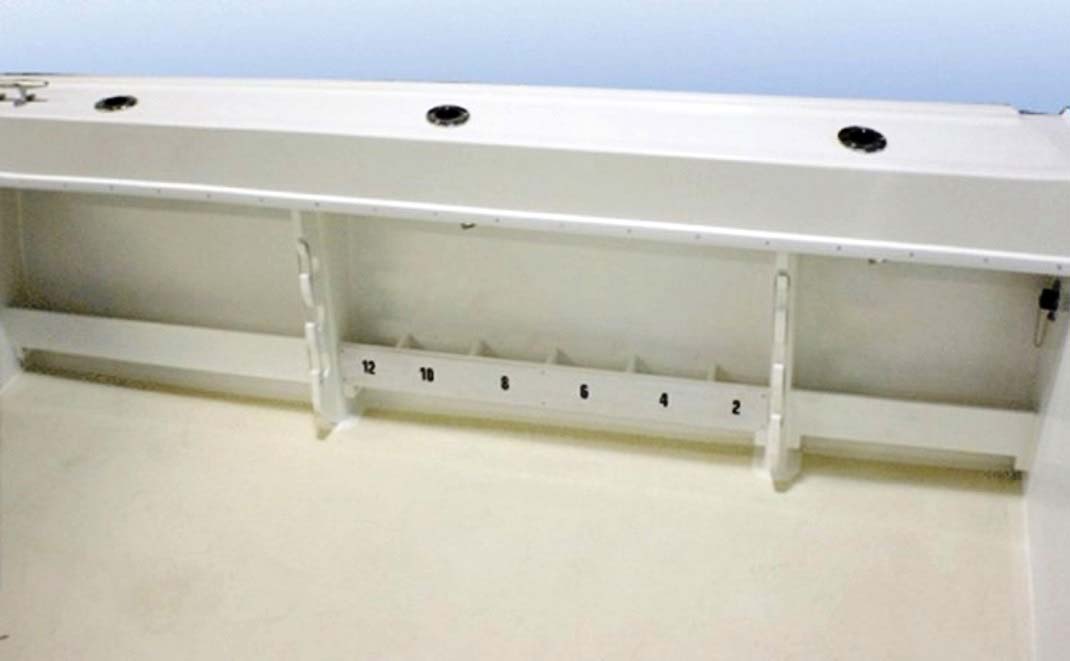 |
| The folks from Steiger offer optional sinker racks in their 23 Miami (a real “Dream Boat” we might add), though an after-market option is the sinker tray from APF Marine (apfmarine.com). | |
Hold Your Ground
Most major outboard manufacturers offer a proprietary joystick piloting feature that will keep you in place, once you save a GPS position and instruct it to hold that spot (Mercury Skyhook digital anchor; Yamaha Helm Master; SeaStar Optimus 360). The electronic joystick controller works with your onboard GPS to operate the engines independently, shifting gears, adding throttle and steering them in different directions to get this done.
If the 30-something twin, triple or quad outboard rig with joystick controller isn’t in your budget currently, Minn Kota’s new Terrova electric trolling motor with Spot Lock might be just what you need. The term “trolling motor” when applied to the Minn Kota Terrova Riptide is a bit of a misnomer. You can use it in the classic sense as a straight-up electric trolling motor, but this special tool does considerably more. When drifting near a wreck in moving water, the Terrova can help slow things down by providing just the right amount of reverse thrust to achieve and maintain that “perfect” drift speed to get consistent bites. If groundfish or tuna are holding around a specific piece of bottom, you can Spot Lock your boat at the touch of a button to employ the invisible anchor feature and keep it right where you want it. Should the fish move around during different stages of the day, the Jog feature with enable you to slide your vessel in 5-foot increments north, south, east or west.
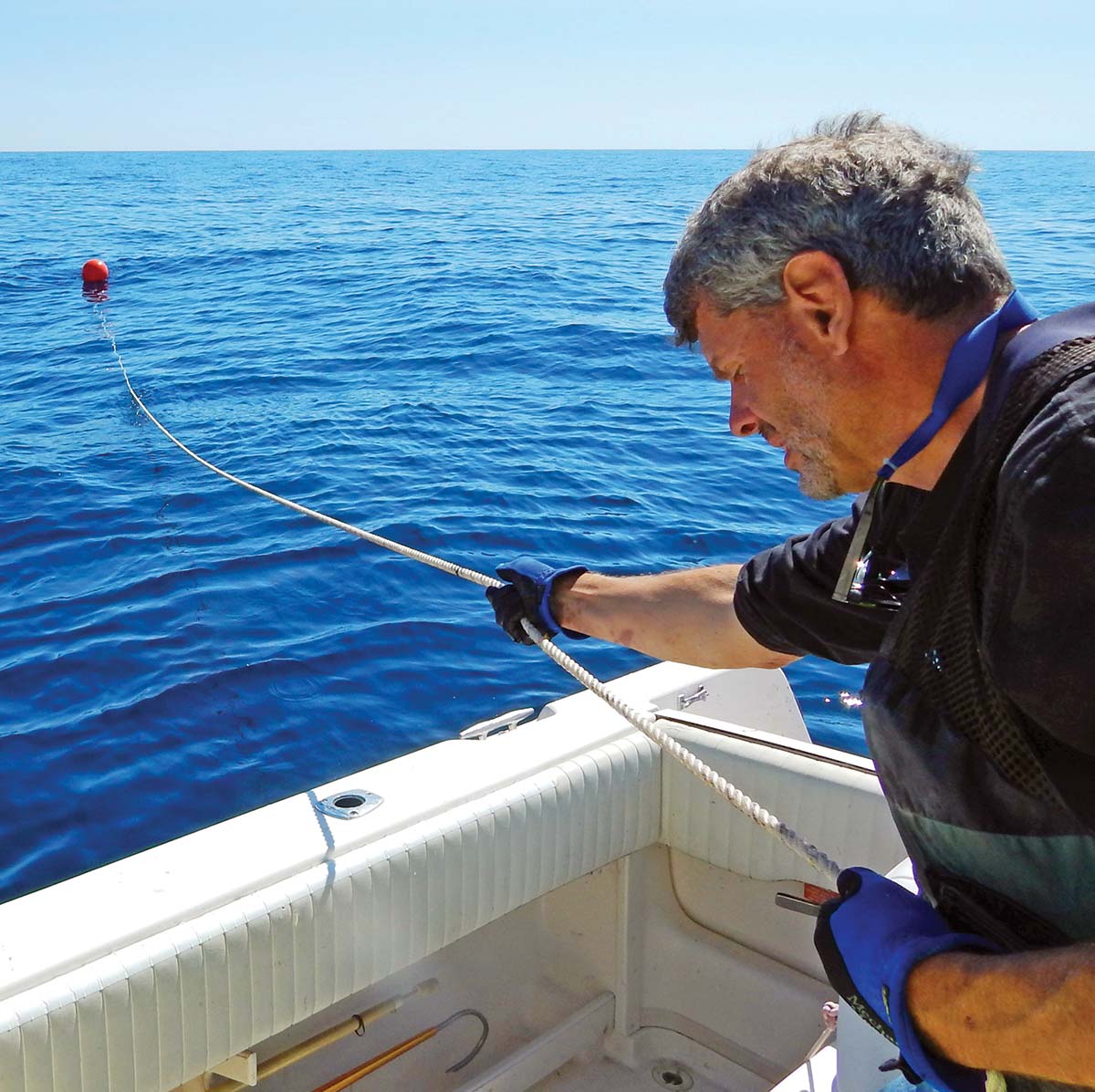
If moon currents or agitated wave actions preclude you from power-drifting, sky-hooking or spot-locking over the wreck with your engine(s) or electric trolling motor, there’s always the old-school anchoring approach that will get the job done. Rather than using my vessel’s onboard anchor setup that includes a 14-pound plow style hook that’s connected to 6 feet of 7/16-inch chain and 400 feet of 3/8-inch rode, I’ll typically bring a grab-and-go dedicated wreck anchoring setup that consists of a 100-pound commercial plastic fishbox loaded with 600 feet of 3/8-inch line and 10 feet of 3/8-inch galvanized chain. This is attached to a special Danforth 15-pound deep-set anchor that features thinner high-tensile strength metal and longer flukes. A red A2 anchor ball completes the travel package, along with a stainless steel retrieval ring that makes getting it all unhooked at the end of the day an easy experience. I have successfully anchored my old 27-Phoenix in 200 feet of water on numerous occasions using this setup.
If I need a second anchor to prevent the boat from swinging too far off the structure, I can always employ my vessel’s onboard anchor setup to fulfill this task. Yet another option when looking to anchor over your favorite structure is to employ a grappling hook setup, not as your primary means of holding ground, but as a secondary approach, to prevent your boat from swinging on and off the wreck during the course of the day. I also have one of these ready to go on a moment’s notice, house in a commercial orange plastic fish basket with a 10-pound flexible four-arm grapnel attached to 6 feet of quarter-inch chain and 250-feet of 3/8-inch nylon line. When taking either of these two setups onboard for a long trip offshore, I’ll either store them down below in the console head area, or strap tem securely in the bow, to keep them out from underfoot.
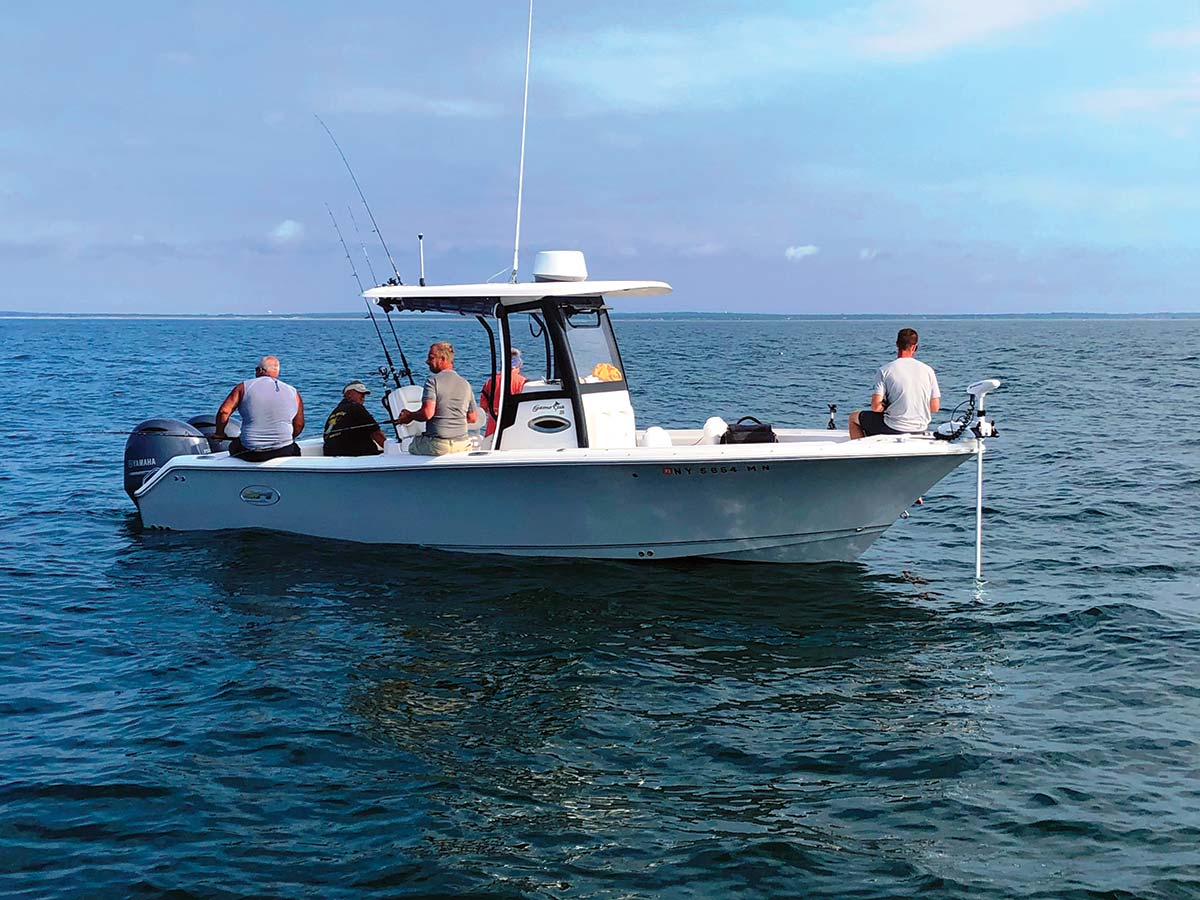
Organize Your Gear
One of the main challenges to getting your boat rigged and ready for wreck fishing organizing your gear – a place for everything and everything in its place! This includes rods/reels, terminal tackle like hooks, line/leader and sinkers, nets, gaffs, fishboxes, bait, jigs, and the likes. With over five decades of practicing the art of wreck fishing, I’ve developed some specific storage habits that might help improve the efficiency of setting up your boat and putting every square inch of space to good use.
I am a big fan of Plano’s water-tight storage boxes and use them exclusively when packing and storing terminal tackle on my boat, or setting up a tactical travel bag when doing away charters. Plano’s made-in-USA lineup boxes cost a few bucks more, but are worth it in my view for both quality/longevity and political considerations. If I am stowing gear aboard my MarCeeJay, loading these portable tackle trays into the inner storage space of my leaning post (holds six of the 3600 Series boxes), in a polyethylene milk crate under my bow’s raised starboard bench seat (stows seven 3600 Series boxes) and a second milk crate under my console in the head area (another seven 3600 Series tackle trays) gives me a whopping 20 tackle boxes of dry storage for jigs, lures, hooks, scissors, knife sharpeners, sinkers or whatever that’s kept dry and ready for immediate deployment when the situation arises.
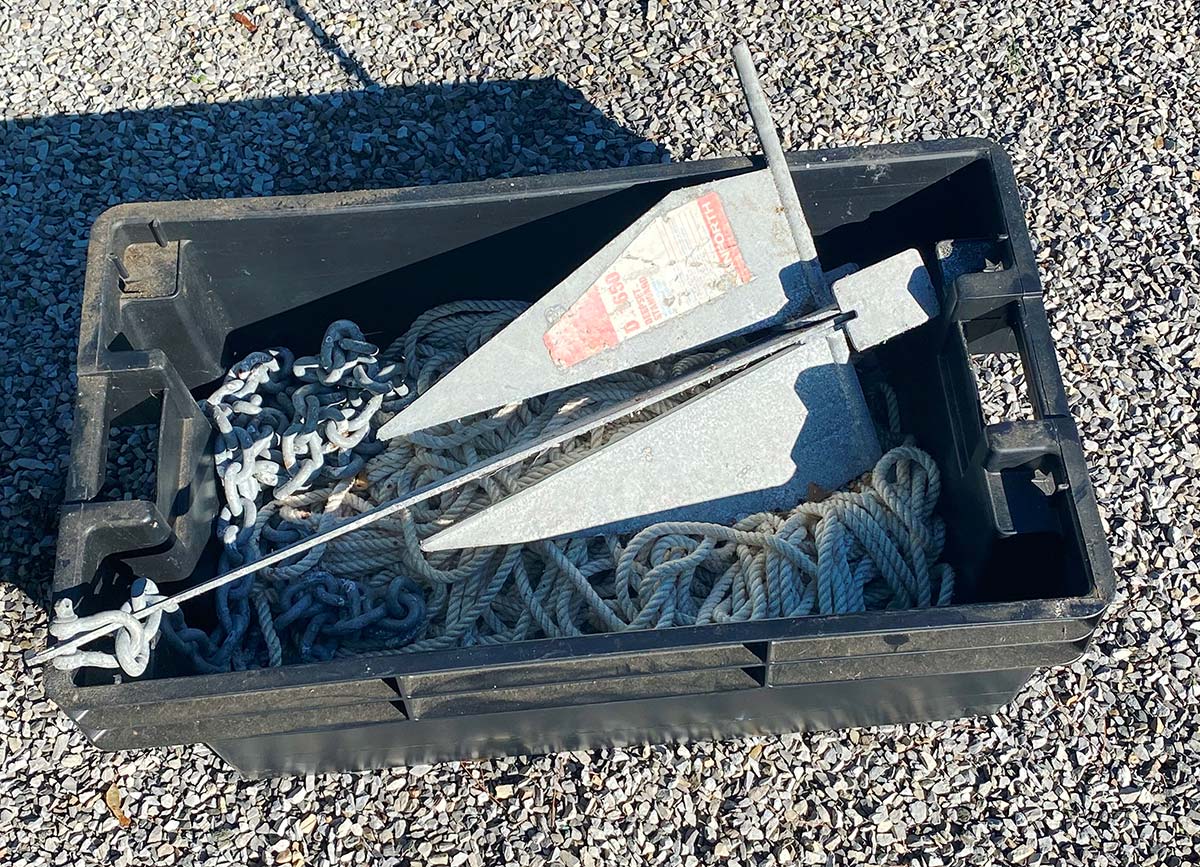
The myriad internal designs of these Plano boxes feature every combination of space management that you can imagine and I’ve had my best luck with the permanent molded-in dividers compared to the removable variety. When I’m traveling on away charters, I’ll usually stuff a half dozen of these 3600 or larger 3700 series tackle trays into a waterproof boat bag or squeeze three or four into a water-resistant orange Plano marine box. This is the best and most affordable way to do it if you don’t have permanent tackle cabinets installed on your boat.
One of the best options that you can get for your boat for wreck fishing is a sinker organizer, which is basically a long rectangular box manufactured from synthetic marine lumber like Starboard or Seaboard, with smaller sub-compartments to hold sinkers of varying sizes. Steiger Craft offers this as an option on all of their new boats and it’s one of those mandatory, must-have options. The folks at APF Products also make an after-market version of this sinker tray organizer and it measures roughly 28 inches long by 6 inches high by 6 inches deep and divides its space into a quintet of 5 x 5 cubicles.
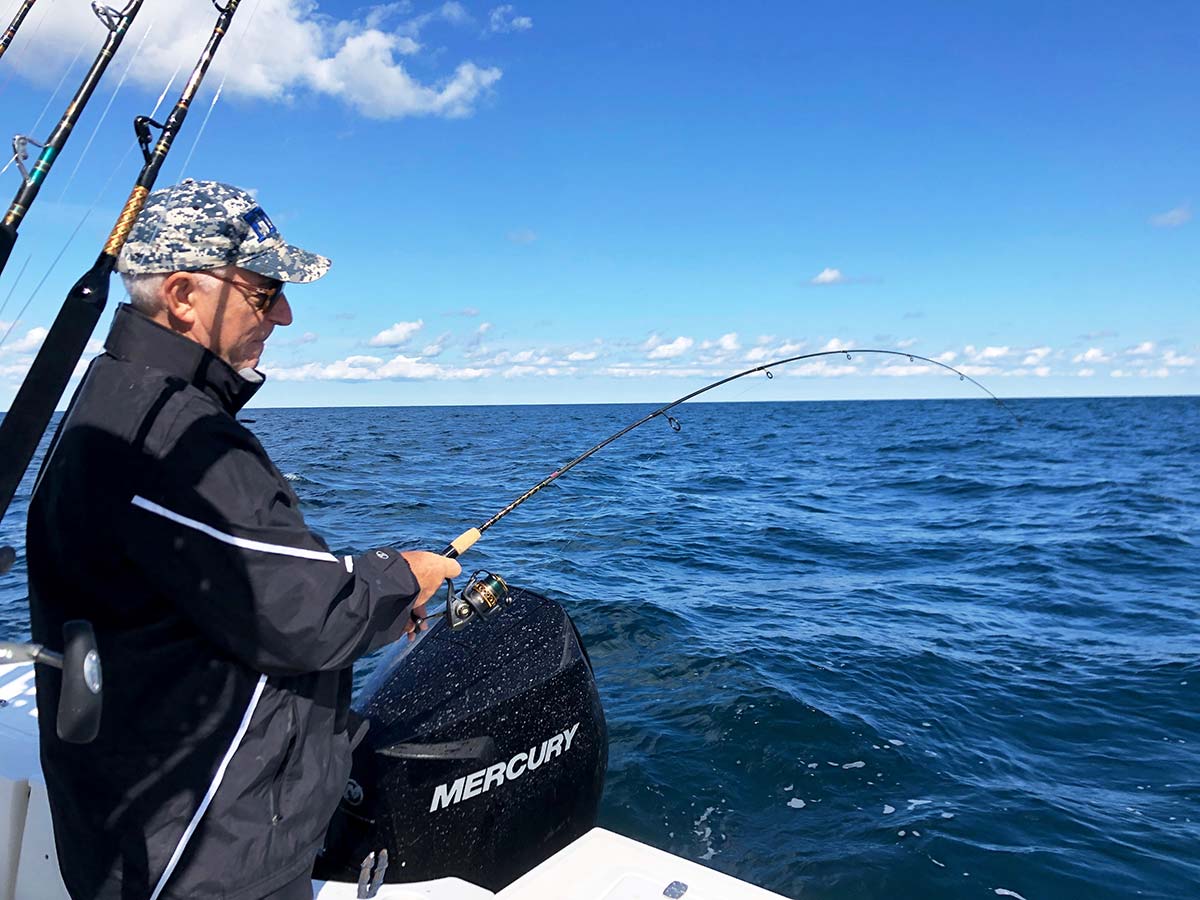
Tackle For The Task
I am constantly tweaking my wreck fishing tackle from season to season, but I do have some favorites that have consistently withstood these periodic purges. Without trying to be blasphemous, I actually employ a few lightweight spinners in my rod and reel array when wrecking, even in deeper waters from 150 to 200 feet. Influenced greatly by the discussion of snap-jigging techniques with Capt. John Paduano and our beloved Fred Golofaro, I have borrowed some of their proven nearshore techniques and used them successfully in deeper water, stepping up their preferred equipment by one notch. In contrast to employing the usual 2500 and 3000 series spinning reels and 10-pound braid used by these two snap-jigging pioneers, I have successfully used 4000 series spinners like the Penn Battle III DX and Okuma Azores offshore. I’ll spool these with 300 yards of 15-pound braid like Western Filament 4orce, Domin8, or PowerPro Maxquatro), tipped by a 15- to 20-foot section of 40-pound wind-on mono leader like Hi-Seas Quattro or Berkley ProSpec.
I find the heaver 15-pound braid and longer shock leader is a necessity when deepwater wreck fishing, since even the slightest nick on the superbraid will cause the entire terminal rig to be lost when it comes tight, typically with an expensive jig and/or a big sea bass on the other end of it. Using slightly heavier jigs (2 to 4 ounces) compared to the standard inshore snap-jigging arsenal (3/4 to 1-1/2 ounces) gives me some extra time on the bottom in the preferred vertical format and it usually doesn’t take to many rod twitches to get a hookup. Casting into the drift or up-current will help the jig get straight up and down by the time it hits bottom.
The spinning rods that I employ for deepwater snap-jigging include the Tsunami Sapphire XT Pro (SABSXTP-631M), which measures 75 inches in length and is rated for 15- to 30-pound line and jigs up to 4 ounces (112 grams); and the Shimano Talavera Type J (TTJS60MH) taping out at 72 inches in length and rated for up to 50-pound braid and 9-ounce (250-gram) jigs. Both of these rods are long enough to impart the critical 3- to 4-foot imitative dart of a fleeing baitfish, but short enough to avoid banging into the T-Top railing or overhead rocket launcher at the end of the rod’s upward sweep.
For conventional gear, my personal rods include some older PENN 6-1/2-foot, 50- to 100-pound Torque and Rampage jiggers, a cut-down 6-foot Tsunami Slow Pitch, plus a 6-foot Shimano Talavera Type J. The one thing that all of these rods have in common is that they feature a trigger grip reel seat, which is mandatory in my experience for having 100 percent control during the physically demanding, energetic snap-jigging routine. My favorite reels have been narrowed down to the Avet SXJ lever drag and Maxel Hybrid 25 star drag spooled with 20-pound braid; and the Avet SX equipped with 30-pound braid when tuna are in the neighborhood, scrounging the bottom near the wrecks for sand eels. Hundreds of trips offshore have proven to me that these are some of the lightest, strongest and most reliable reels on the planet for the modest investment cost (I buy them in stores when on sale, just like you do) and are the ones that I choose when wreck-hopping, even in deeper waters.
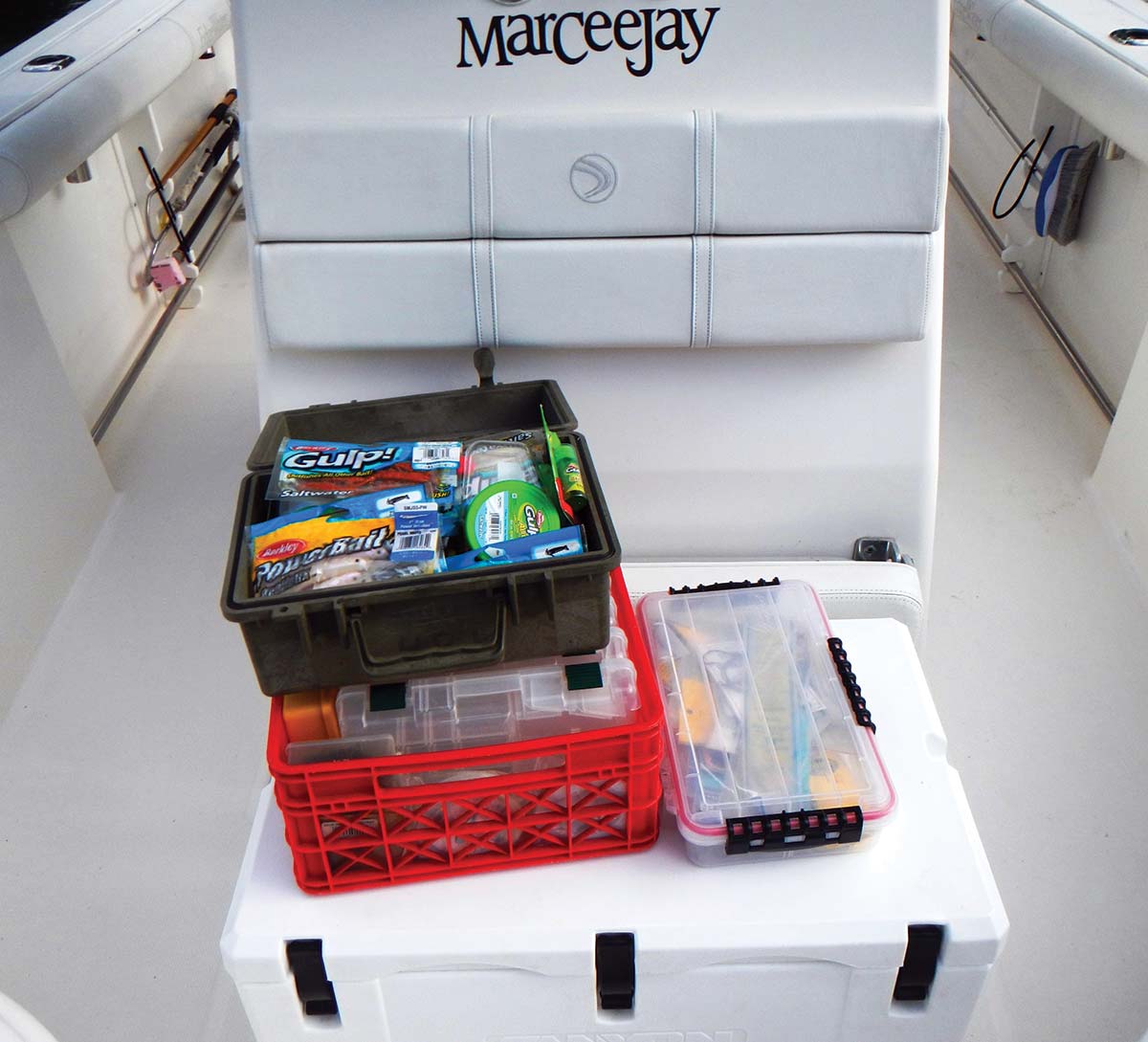
The Business End
My go-to jigs are divided into two categories, bucktails and metal – but with a teaser twist. If I am using a bucktail on the bottom, my choice 99.9 percent of the time is the SPRO Prime jig with weights varying from 2 to 8 ounces depending the water depth and current speed. Sometimes’ I’ll leave the jig to work on its own and other times I’ll attach a piece of natural pork rind or high-tech plastic strip to it for added scent and allure, depending on the line’s scope angle, or how fast the water is moving. The secret sauce for making this jig even more deadly is to add a teaser 18 to 24 inches above using a simple 6-inch Dropper Loop. I’ll then attach a 4/0 or 5/0 short shank tuna or bait-holder hook to the loop, adding either a plastic squid or a 4-inch Gulp Minnow to complete the setup.
This particular rig creates the illusion that a medium size squid is chasing a smaller baitfish, thereby triggering off the natural predatory attack mode in neighboring wreck fish (sea bass, blackfish, cod, pollock, bluefish, etc.) that are hovering near the structure. I frequent catch double-headers on both the teaser and the jig, putting a nice bend in the rod as the hooked fish panic in different directions at the same time.
When employing metal jigs, I’ll frequently use assist hooks on both the top and bottom ends of the jigs, as well as the usual teaser a few feet up the line. I have nailed triple-headers on this setup totaling over 16 pounds of angry, fighting black sea bass. The metal lures that I prefer to use in deep water are those that sink fast, like Hogy Lures’ 100-gram Sandeel or Herring jigs, 60- to 100-gram Braid Slammers, 4-oz Ahi USA Assault Diamond Jigs, 100-gram Shimano Butterfly Flat Fall and 80-gram SPRO Sushi jigs. There are other brands and types out there, but these are the ones that I have had personal success using on the wrecks that don’t put too much stress on the rod tip during snap-jigging maneuvers.
The last and most critical piece of hardware that enables quick and easy lure swaps are the 50- and 75-pound SPRO Prime Snaps. I typically combine these with the SPRO #2 (230-pound) Power Swivel, which is a match made in heaven, creating one of the most ergonomic, reliable and affordable snap-swivels on the market.
If you have any additional thoughts on how to set up your boat for wrecking, give me a shout. Be safe out there and enjoy the fall fishery during breaks in the weather.



